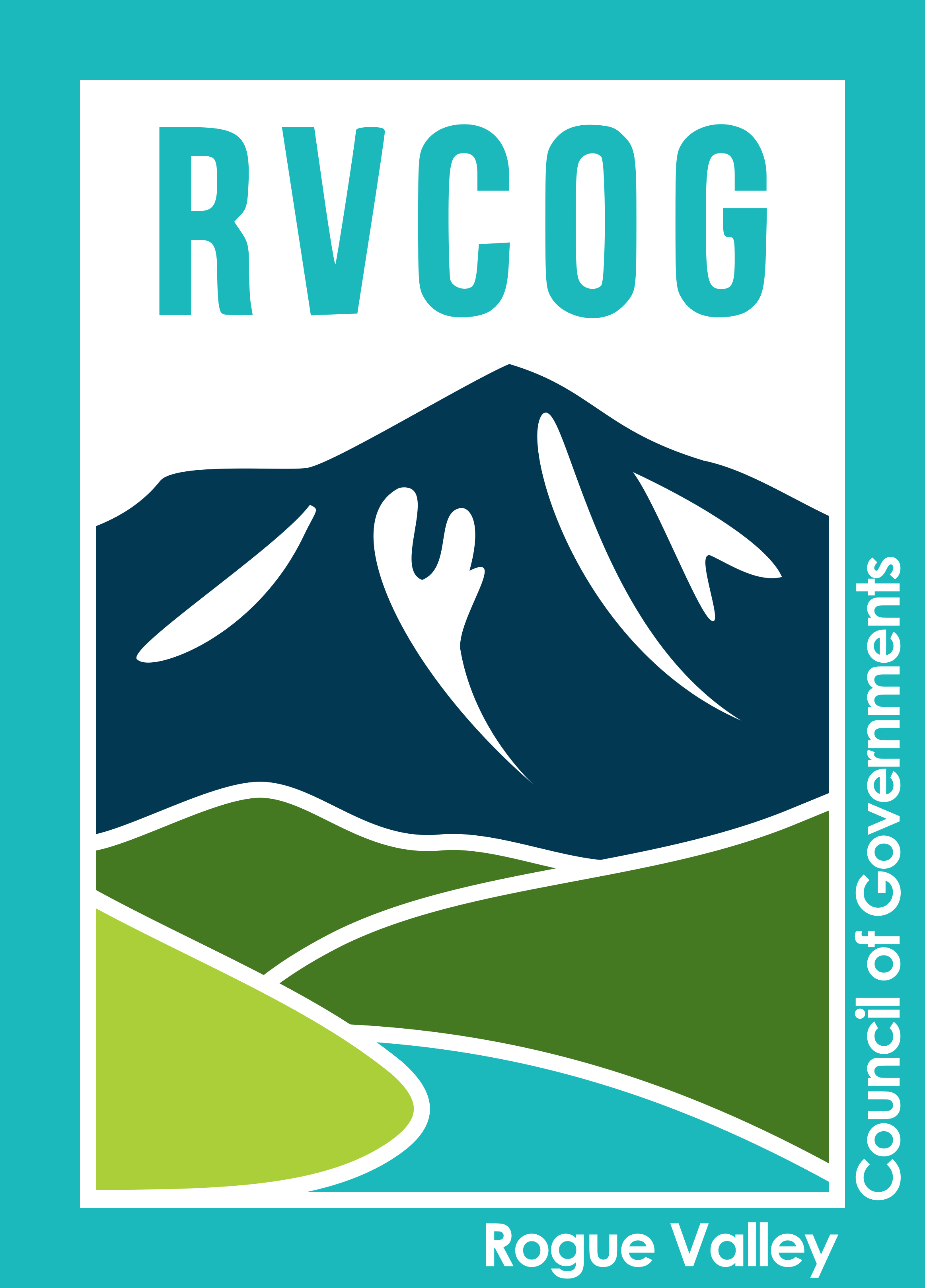Rogue Valley Council of Governments
Medford Riparian Restoration Project – 10th Street to McAndrews
What’s New?
This page will be updated as new information is available including project activities, what’s been completed, and other information.
Introduction
The 400-square mile Bear Creek basin, located entirely within Jackson County, is the most urbanized watershed in Southern Oregon. The mainstem flows through five communities, the largest being Medford, before it joins the Rogue River at River Mile 127. The creek is water quality limited for phosphorus, dissolved oxygen, chlorophyll a, pH, ammonia, temperature and fecal coliform (Bear Creek TMDL 2013).
This reach of Bear Creek is used as a migration route for adult chinook and coho salmon as well as steelhead. The area is also used as a spawning ground for chinook and coho. Coho salmon are currently listed as threatened under the Endangered Species Act.
A partnership, led by the Rogue Valley Council of Governments and including the City of Medford, Oregon Department of Transportation, Oregon Stewardship and the Jackson County Job Council, is working with public and private landowners in downtown Medford to improve riparian and stream bank conditions along 0.5 miles of the stream from 10th Street downstream to McAndrews Road. Funding for the project is being provided from a grant through Pacific Power’s Blue Sky Habitat Fund, the City of Medford, and by donated labor and services by the City of Medford, ODOT, Oregon Stewardship, RVCOG, and others.
This area is bordered by Interstate 5 on the east and private property (mostly commercial businesses) on the west. The bear Creek Greenway provides access through the eastern portion of the area for walkers, hikers, and bikers.
Project work started in the fall of 2014. The first task will focus on removing blackberries by using herbicides. This task will be conducted by licensed contractors. Special care will be taken to not spray native plants to the greatest extent possible. The dead vegetation will be removed. Planting crews will then place native trees and shrubs in selected areas. The planting phase of the project will last from late November 2014 through mid-January 2015. The plants will be watered and weeded on a regular basis. Spot spraying of blackberries and other invasive plants will occur during 2015 as needed. The planting sites will be monitored during the 2015 growing season to measure plant survival and plant response. Results of the monitoring effort will guide watering and weed control efforts.
Removal of invasive plants such as Armenian Blackberry, goat head, English ivy, star thistle, and poison hemlock while retaining native trees and shrubs, followed by planting of native trees and shrubs where needed, will improve stream conditions; most notably sediment storage, nutrient delivery and routing as well as riparian plant growth and development. These conditions will aid in addressing the water quality concerns as well as provide better conditions for adult and juvenile salmon and steelhead.
By partnering with entities such as the City of Medford, Oregon Department of Transportation Oregon Stewardship and the Job Council, the project will employ people from the community, focusing on local youth, in a project they can watch for decades to come.
Project Partners
- City of Medford
- Oregon Stewardship
- RVCOG
- Jackson County
- BCWC
- ODOT
- SWCD
Maps
Project Schedule
Reports
Reports to Funding Agencies
Presentations
Next Steps
- Place weed mat and mulch around each plant
- Finish planting by mid-January
- Plant maintenance (weeding, spot spraying, mulching and watering through 2016)
